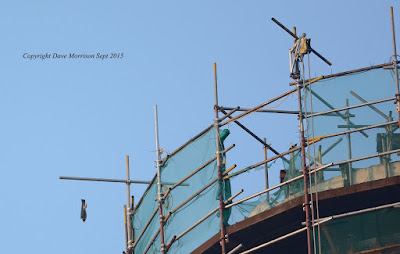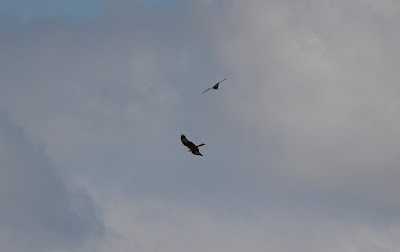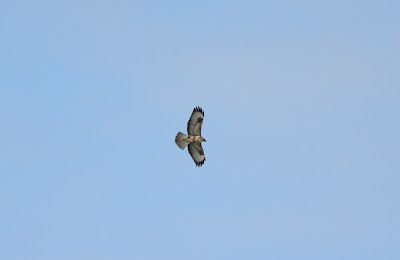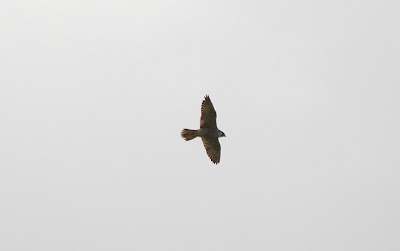Having now been involved with London’s Peregrines for 15 years and having witnessed unusual patterns, or not the norm, I thought there would be little to surprise me in regard to behaviour.
Despite watching a number of urban pairs in various hunting scenario’s I have never seen a peregrine take a bird head on, it has always been a tail chase or a strike from the side, above or below.
On Sunday September 20th I was watching the pair at Battersea Power Station hunting as per normal, from the chimneys. With ongoing works to all 4 chimneys, the pair, and indeed any of the 4 juveniles have adapted well and still use them to hunt from. Specially placed scaffold tubes have allowed continued use even while they are being demolished.
 |
| Strategically placed horizontal tubes around the chimneys have allowed continued use |
 |
| Juvenile dropping off to gain more speed |
 |
| Returning |
It is testament to the peregrines character and resilience that they can adapt to habitat/visual changes in close proximity; such is there bond and tie to the Power Station.
During the course of the morning the adults were joined by one of the juveniles, a male and very likely the last of the juveniles still with the adults although they do come and go.
With neither adult as yet having taken any of the many feral pigeons leaving the Power Station south, the juvenile, now fully independent it appeared, settled down to hunt on his own from the southern chimney’s.
2 failed hunts later was quickly followed by a 3rd hunt, he flew past me at speed but instead of latching onto a feral or feral’s leaving, there was none other than a group of 8 heading back into the Power Station from the south.
I did think at the time what had he seen as I dismissed the incoming birds as surely he would not target birds coming back in at speed, I was wrong.
With an impact that made me wince he grabbed one of the birds head on, a flurry of feathers and a couple of grabs and he emerged with the feral.
This was something I have never seen before and is a very dangerous manoeuvre for a peregrine due to the combined speeds of both birds, he did slow himself down which was when I guessed what he was up to.
I have been watching the Battersea pair for many years, obviously it is not the same Falcon and Tiercel, this brings me to the fact, how did he learn this or was it a one off?
He certainly never learnt it from the adults, they have never hunted this way, was it just juvenile exuberance and just a half hearted grab that came off?
I have heard of Peregrines hunting this way in the West Country, if I recall correctly these were adults, as he has not fully fledged I am inclined to think it was a one off.



















































